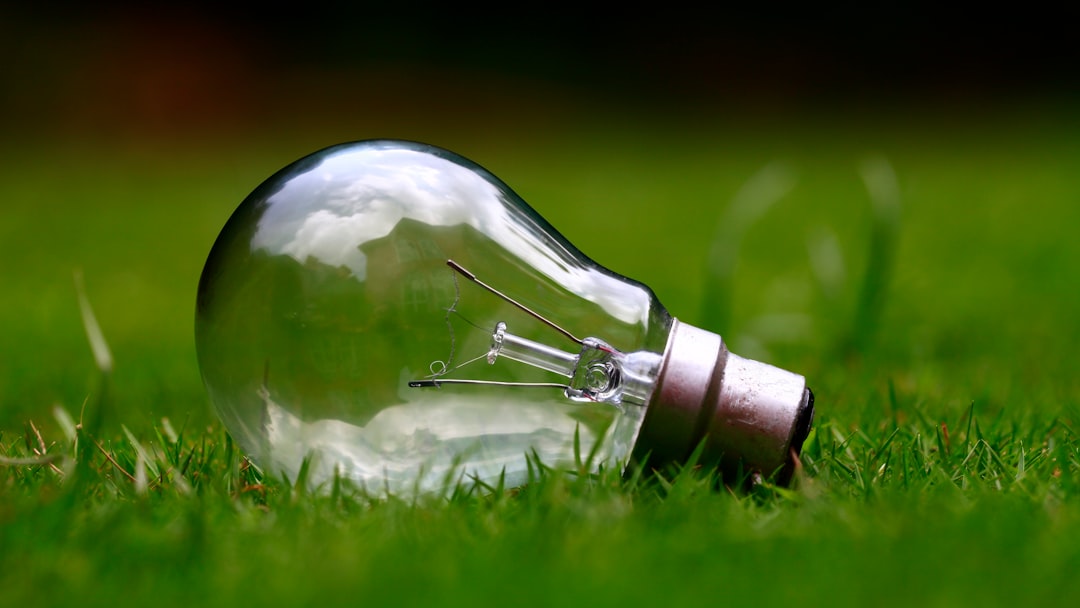Discover how smart materials, intelligent power management, sustainable design, and informed choices come together to significantly reduce energy consumption in modern electronics.
Energy Efficiency in Electronics: How Smart Innovations and Choices Save Power
Key Takeaways
- Advanced semiconductor materials like Gallium Nitride (GaN) and Silicon Carbide (SiC) drastically improve power conversion efficiency.
- Innovative power management techniques such as Dynamic Voltage and Frequency Scaling (DVFS) and power gating reduce energy waste significantly.
- Software optimization tightly integrated with hardware further enhances energy savings without sacrificing performance.
- Certification programs like ENERGY STAR and EPEAT help consumers spot efficient and sustainable products.
- Consumer behavior and awareness are critical in maximizing efficiency benefits and overcoming the rebound effect.
- Implementing circular economy principles in design and manufacturing extends device lifecycles and reduces electronic waste.
- Energy-efficient electronics drive innovation in key sectors such as electric vehicles, renewable energy, and portable healthcare devices.
Table of Contents
- Introduction to Energy Efficiency in Electronics
- 1. Semiconductor Materials and Energy Efficiency
- 2. Power Management Techniques That Save Energy
- 3. System Integration and Software Optimization
- 4. Industry Standards and Policy Incentives
- 5. Consumer Role: How to Cut Energy Use at Home
- 6. The Rebound Effect: Efficiency’s Hidden Challenge
- 7. Circular Economy and Sustainable Design in Electronics
- 8. Energy Efficiency Applications in Key Sectors
- 9. The Future of Energy Efficiency in Electronics
- Conclusion
- FAQ
Introduction to Energy Efficiency in Electronics
Energy efficiency in electronics means using less electrical power to accomplish the same or better performance. As electronic devices become integral to everyday life—from mobile gadgets to massive data centers—their cumulative energy consumption is significant. Improving efficiency not only reduces electricity bills but also diminishes carbon footprints and supports global sustainability efforts.
In this article, we explore how breakthroughs in semiconductor materials, power management, software optimization, sustainable design, and consumer behavior all weave together to enable smarter, greener electronics.
1. Semiconductor Materials and Energy Efficiency
Advanced Semiconductors That Boost Performance
The semiconductor lies at the core of all electronics. While silicon remains dominant, new materials offer remarkable advantages in power efficiency.
- Gallium Nitride (GaN): Known for operating at higher voltages and frequencies than silicon, GaN is ideal for power converters such as fast chargers. This means chargers become smaller, run cooler, and waste less energy as heat.
- Silicon Carbide (SiC): Its excellent thermal conductivity allows reliable operation at elevated temperatures, making SiC perfect for electric vehicle components and renewable energy inverters.
"Wide-bandgap semiconductors like GaN and SiC drastically cut energy losses during power conversion, marking a leap forward in device efficiency." – Industry Insight
Key Advantages of Advanced Semiconductors:
- Lower power loss and heat generation
- More compact, lightweight components
- Longer device lifespans with enhanced reliability
2. Power Management Techniques That Save Energy
Smarter Chips, Smarter Energy Use
Traditional electronics waste significant energy through inefficient power usage. Innovations are changing that through techniques like:
Dynamic Voltage and Frequency Scaling (DVFS)
DVFS adjusts processor voltage and clock frequency dynamically, matching performance to workload. For example, your device will use less energy browsing the web than when running intensive applications.
Power Gating
This technique powers down inactive chip sections, combating "leakage current" that drains batteries even when devices appear idle.
Battling Phantom Power
Phantom power consumption occurs when devices draw electricity even when turned off or in standby, accounting for 5–10% of household energy bills. Smarter electronics now employ low-power standby modes and timers to reduce wasted power.
Benefits:
- Longer battery life for mobile devices
- Reduced household energy consumption
- Lower environmental impact without user inconvenience
3. System Integration and Software Optimization for Energy Savings
Efficiency gains continue through software that collaborates with hardware. Developers optimize code, employ energy-aware compilers, and implement adaptive algorithms that adjust device performance or quality based on demand.
This harmony reduces energy per operation and extends battery life while maintaining responsiveness and smooth user experiences.
4. Industry Standards and Policy Incentives
Certifications help consumers identify truly efficient products:
- ENERGY STAR enforces strict efficiency benchmarks on power use and standby performance.
- EPEAT evaluates broader environmental impacts including recyclability and material sourcing.
Government incentives like tax credits and rebates further promote availability and adoption of efficient technologies, driving innovation and lowering costs.
5. Consumer Role: How to Cut Energy Use at Home
Consumers can actively save energy through practical steps:
- Buying certified products with labels like ENERGY STAR or EPEAT
- Enabling built-in power-saving features such as sleep and eco modes
- Turning off or unplugging unused electronics to prevent phantom power drain
- Keeping software updated to benefit from the latest energy optimizations
Payoff: Lower energy bills, reduced environmental footprint, and extended device longevity.
6. The Rebound Effect: Efficiency’s Hidden Challenge
Improved energy efficiency can paradoxically increase total energy use. When devices become cheaper to run, consumers may use them more frequently or acquire additional units—diluting efficiency gains. This phenomenon is known as the rebound effect or Jevons' paradox.
Overcoming this requires education on mindful consumption habits and designing regulation-friendly systems that encourage sustained conservation without reducing convenience.
7. Circular Economy and Sustainable Design in Electronics
Energy efficiency extends beyond active use. The full lifecycle impact—from resource sourcing, manufacturing, to end-of-life recycling—matters immensely.
- Ethical sourcing and energy-conserving manufacturing mitigate overall harm.
- Designing modular, repairable devices supports upgrading instead of replacing.
- Recycling components reduces e-waste and recovers valuable materials.
Such circular economy strategies amplify sustainability across the product's entire existence.
8. Energy Efficiency Applications in Key Sectors
Electric Vehicles (EVs)
GaN and SiC semiconductors improve motor control and battery management, enabling faster charging and longer range while reducing vehicle weight.
Renewable Energy Systems
High-efficiency semiconductors in solar inverters and wind turbine controllers reduce power losses, maximizing energy delivered to the grid.
Portable Healthcare Devices
Power-saving technologies extend battery life and durability in wearable medical monitors, enabling critical healthcare access in remote or resource-constrained settings.
Efficient electronics are foundational to advances in sustainability, health, and quality of life.
9. The Future of Energy Efficiency in Electronics
Future progress hinges on cross-disciplinary collaboration across materials science, software innovation, behavioral sciences, and policy.
Connected smart grids and devices will optimize energy not just individually but holistically. Empowered consumers with real-time data can make informed choices, while supportive policies will continue accelerating technology adoption equitably.
Conclusion: Making Electronics Work Smarter, Not Harder
Energy efficiency in electronics is essential for environmental and economic sustainability. By harnessing advanced materials like GaN and SiC, implementing intelligent power management, embracing sustainable design, and making conscious consumer choices, we can drastically reduce energy waste worldwide.
From smartphones to electric vehicles to life-saving medical devices, efficient electronics are crucial to building a better, more sustainable future. Through innovation, policy, and collective action, we can ensure technology works smarter—for us and the planet.
Frequently Asked Questions
What are the benefits of using Gallium Nitride (GaN) semiconductors?
GaN semiconductors operate efficiently at higher voltages and frequencies, resulting in smaller, cooler, and faster power converters that consume less energy and generate less heat compared to traditional silicon-based components.
How does Dynamic Voltage and Frequency Scaling (DVFS) save energy?
DVFS dynamically adjusts a processor’s voltage and frequency according to current workload demands, minimizing power use during light tasks while providing full performance when needed.
Why should consumers look for ENERGY STAR and EPEAT certifications?
These certifications guarantee that products meet stringent energy efficiency and environmental standards, helping consumers choose devices that reduce power consumption and environmental impact.
What is the rebound effect and how does it affect energy savings?
The rebound effect occurs when energy savings from efficient devices prompt increased usage, which can offset or erase the expected reduction in energy consumption. Balancing this requires consumer education and smart system design.
How does sustainable design contribute to energy efficiency?
Sustainable design extends energy efficiency beyond operation by using recyclable materials, enabling easy repair and upgrades, and reducing waste through circular economy principles, lowering overall environmental impact.






